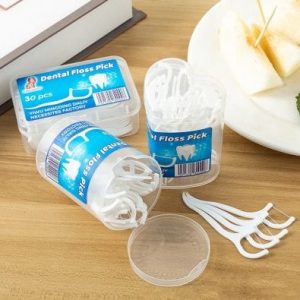Brushing your teeth is an important way to maintain oral hygiene. Brushing your teeth daily is a good hygiene habit. Mastering the correct method of brushing can remove plaque and soft dirt. With the help of the massage effect of the toothbrush, it can improve the blood circulation of the gum tissue and the keratosis of the epithelial tissue. , Thereby helping to enhance the defense of the periodontal tissue against local irritation and maintain the health of the gums. Therefore, brushing is an important measure to prevent dental caries, gingivitis, and periodontitis. Most people think that brushing is simple, but it is not. In life, many people brush their teeth incorrectly. Some people use the horizontal brushing method. Not only does it not clean the teeth well, it also fails to massage the gums. On the contrary, it makes the gums and All teeth are damaged. The result of damaged gums is shrinkage, which exposes the root of the tooth. In this way, when encountering stimuli such as cold, heat, sweet and sour, it will produce different degrees of soreness; the result of tooth damage is: in the tooth neck A groove is formed in the part, which is medically called a “wedge-shaped defect”.
1. Correct grip, with thumbs extending forward more than the “like” gesture.
2. Align the toothbrush at the place where the teeth and the gums meet, and when brushing the upper jaw teeth, the bristles face upwards as shown in the figure (when brushing the upper row of teeth, the bristles face upwards, covering a little gum, and the toothbrush moves horizontally and short distances.) (brushing the lower row When the teeth are bristles facing down, brush in the same way.)
3. The bristles and the teeth are at an angle of 45-60 degrees. At the same time, gently press the bristles toward the teeth to make the bristles slightly arc, and the sides of the bristles also have considerable contact with the teeth. (The toothbrush is at an angle of 45 to 60 degrees with the teeth, and lightly press against the teeth, so that the sides of the bristles are also in contact with the teeth, but the bristles must not be branched by the teeth.)
4. After the toothbrush is positioned, start a short-distance horizontal movement, brushing the two or two teeth back and forth about ten times.
5. Open your mouth when brushing your teeth and see the last tooth on the right side of the upper row. Then start from the right back cheek side and brush to the left; then the left occlusal surface, the left lingual side and then back to the right lingual side, and then the right occlusal surface. There will be no omissions in such a sequential brushing. (The sequence of brushing your teeth has a formula: start on the right and end on the right.)
6. When brushing the occlusal surface, brush two or two teeth back and forth.
7. The lingual side of the posterior teeth of the upper jaw is less easy to brush. The bristles are still aligned with the junction of the teeth and the gums, and the handle should be close to the front teeth.
When brushing the right lingual side, the handle will naturally face to the left. At this time, we recommend using the left hand to brush the lingual side of the right posterior teeth.
8. In addition, brush the buccal side of the back teeth with the same hand, that is, brush the right buccal side with the right hand. Use your left hand on the left cheek side. At the same time, the handle of the brush can prop up the cheeks to facilitate sight. )
9. After brushing the upper teeth, use the same principles and methods to brush the lower teeth.
The correct thing is to brush your teeth in the morning and evening, rinse your mouth after meals, and brush your teeth up and down instead of sideways.








